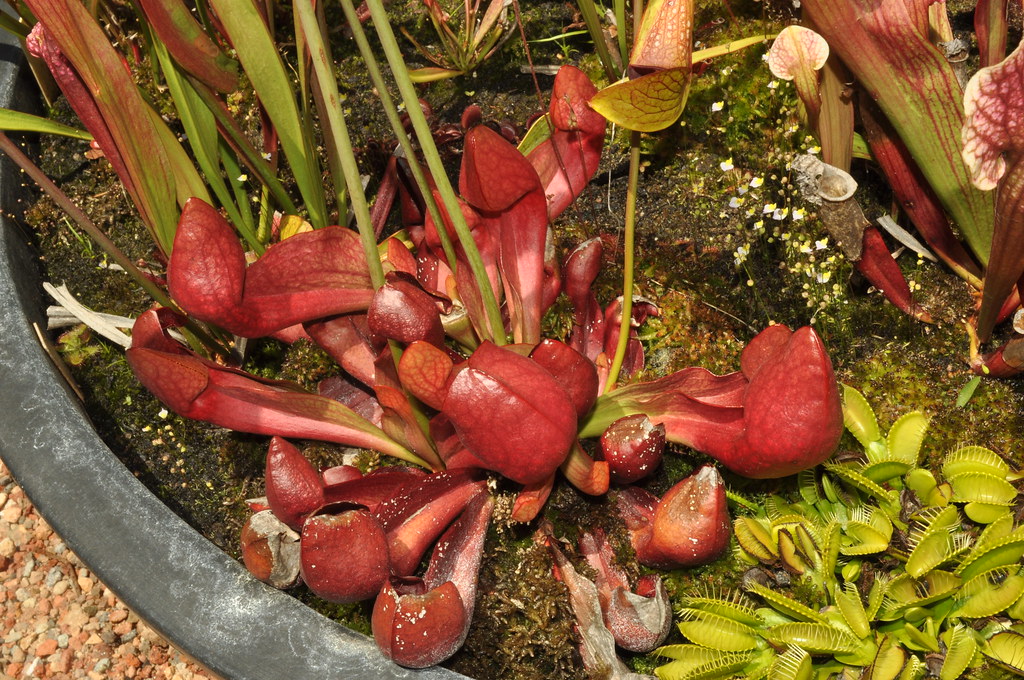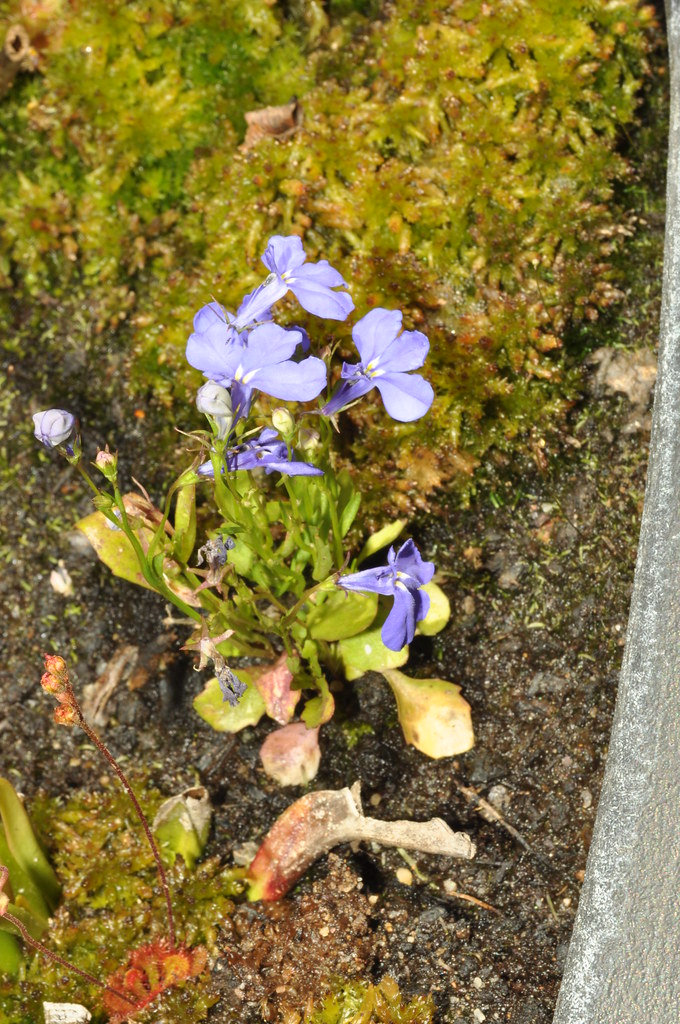Now the silly season is drawing to a close, I finally (!) got a chance to do justice in photographing the Sarracenia gardens and their inhabitants. This is pretty much an exhaustive look at what I am growing right now.
A warning up front, this is a photo intensive entry and will take a long time to load.
Make sure you also see Part 2 (the red flava varieties) and Part 3 (all flava varieties); this post covers the potted Sarracenia and the hybrid garden only.
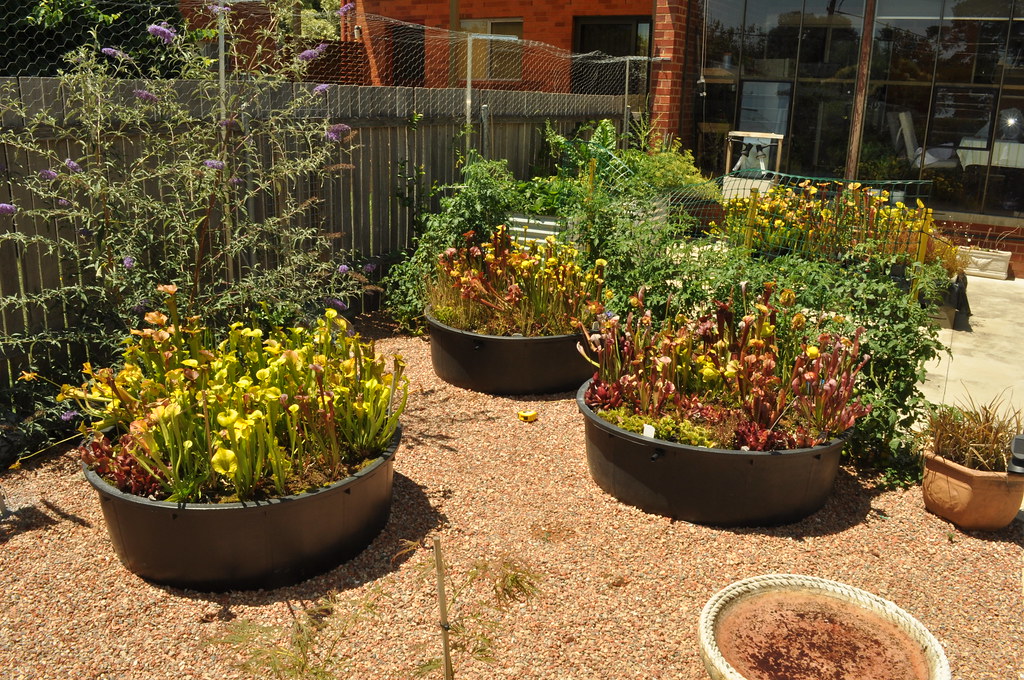
As you can see, its been a busy year for landscaping. Here is a pic of the same area from the same time last year:
To get the ball rolling, here is the potted Sarracenia. I’m hoping there will be room for another garden this winter…
Drosera binata, clones “Golden Giant” (left) and “Marston Giant” (right). These plants were obtained from the now defunct Living Traps way back in 2010. They have filled up their 200mm/8” pots and are probably in need of being split. The foam tray at right contains a third form D. binata identical to those growing in the Blue Mountains west of Sydney, and my 2011 Sarracenia flava seedlings.
One of said seedlings, this one should mature into a nice looking S. flava var. cuprea.
Sarracenia flava, either var. cuprea or atropurpurea. When I brought this (from the AUSCPS Christmas meeting in 2011), it was solid red but behaves as a coppertop if overgrown by more vigorous plants. Should I get another Sarracenia garden, I will make sure this plant gets planted right at the front to allow it to colour up.
Another temperamental plant, this is S. flava var. rubricorpora “FRT 2” from David Martin, who used to run a nursery called Fly Free Zone in Queensland. This was his biggest flava, and it can become a red tube in good years. It has only ever had red tubes once for me, and more usually looks like a striped flava var. flava. It tried to produce red tubes this year, but has bleached out. We have very windy springs, and it looks like allowing plants to clump up like this helps with pitcher production (albeit at a loss of colour).
A new addition from last year – a nice cut-throat flava I got at the Mount Tomah CP sale from Gordon & Lyn Hanna. This clone has a very large lid and I am hoping it will look spectacular in future years.
Another cut-throat flava, this one is a seed grown clone produced by John Creevey of Gotcha! Plants. This clone likes to clump up off a single rhizome and resents being divided, so much so that this clone sulked for two years before producing reasonable pitchers. This is the best it has looked in a very long time.
The above two photos are of a very nice complex hybrid, Sarracenia ((flava x alata) x flava) x (flava x alata). It was bred by David Martin and is pretty much a mini-me red tube flava. Its large lid makes it very impressive, especially when allowed to clump.
I have dubbed this Sarracenia leucophylla “Pink English” because it originated from a single seedling out of a batch of wild collected seed back in the 1970s and grown by The Englishes, who later divorced and went out of carnivorous plants. Fresh pitchers are pinkish looking, but soon fill in to becoming increasingly red, looking most spectacular just before the first frosts. This particular plant was brought from Gordon & Lyn Hanna at the Mt Tomah CP sale last year.
This S. flava var. ornata is another Gordon & Lyn Hanna plant from the MT Tomah sale…
As was this spectacular and very red flava var. rubricorpora…
And this large-lidded rubricorpora clone.
Now, on to the gardens proper, starting with the hybrid garden.
Behind the gardens is a trellis for some tomatoes that self-sowed from last year’s cherry tomato plants. They make a nice windbreak in addition to being tasty… nothing like home grown tomatoes.
This is a Sarracenia leucophylla x (x formosa), bred by David Martin. He said it was the plant everyone wanted from his collection. It looks beautiful at this time of year, and will do so until it goes dormant in late Autumn.
The books will tell you Drosera burmannii is a tropical or subtropical plant, but there are clones in Australia that occur naturally in frosty areas. For example, I saw a thriving population just south of Tenterfield back in December 2003 that would experience very heavy frosts. Drosera burmannii is an annual and survives winter via its seeds. Here in Canberra, their seeds usually germinate in early December and grow very quickly. These plants are self-sown on live Sphagnum cristatum and seem to ride the new flushes of Sphagnum growth like they are surfing. I have not yet seen Sphagnum swallow up one of these plants.
Just to the right of these D. burmannii are other sundews. The red dewthread, Drosera filiformis “Florida Red”, acts as a very short lived perennial here. Most live for 2-3 seasons and die after flowering. Fortunately, they are prolific self pollinators that self sow at random. I’m hoping they will become a very pleasant weed in the Sarracenia gardens.
Speaking of self-sown red dewthreads, there is one growing just to the right of another prolific species – Drosera pygmaea. These guys got into the garden because a flicked a few gemmae about last autumn. The winter rains then scattered them at random through the garden, leaving 3 or so small colonies. I am looking forward to seeing how many plants there are after they fling their gemmae about later this year.
This lovely looking hybrid is a NOID plant. It is a hybrid bred by David Martin that John Creevey gave me in 2012 as a really tiny plant. Now it is pushing 20 cm. The contrast between the red-pink of the pitcher and the white areolae in the hood is spectacular, especially in fresh pitchers.
There are a few Sarracenia species in this garden – Sarracenia purpurea ssp. purpurea and S. rosea. This all red purpurea is from a private grower in Sydney.
And this one is from seed collected in Ontario, grown by another local CP grower.
This Sarracenia rosea is the Gotcha! Plants clone. It is one of the best out there in Australia and can get very big very fast. My original plant doubled in size in a week after it caught its first snails!
This is a random purpurea hybrid, again grown by David Martin. He and I have no idea what it is, but it puts on a good show mid summer.
The famous Sarracenia ‘Scarlett Belle” is always a stunner, the white areolae catch the sun like lead-light windows.
This Sarracenia x formosa looking thing has a bit of a story behind it. Way back in 1997, I brought a plant at the Sunshine Coast Garden show that looked like a Scarlett Belle, but with much bigger windows in the hood. The plant was from Fly Free Zone, and when he shut his nursery, I dug through his plants trying to find one. Just when I have given up hope, I found a few of the above plant and thought it must be the Scarlett Bell look-a-like. Sadly, it wasn’t, but it fills a niche – Sarracenia psittacina hates Canberra’s winters (ie. they get smaller and smaller each year, leading me to have given my plants away), so this look-a-like is very appreciated.
I grow three VFT clones in this garden – (from top to bottom) David Martin’s green clone, Paradisea Clone # 1 and a seed grown cloone by John Creevey of Gotcha! Plants. I am somewhat sentimental about the green clone plant because I tried and failed to grow it as a kid many, many times. For this reason, I wanted to make sure it got pride of place now I am able to grow them well. John C., if you are reading this, now you know why I made sure I got hold of a piece when David shut up shop. Of these clones, John’s clone is the best performer, having upright and very, very large traps (up to 4 cm, which is getting close to B52 size). It also gets a nice reddish centre that means it self-catches numerous insects, mainly flies. It would be bigger than it is above if we had earwigs here (which fortunately we don’t); I used to catch them at the other house at night and a few times managed to fill the gob of every VFT I had with them. Accordingly, the VFTs got very big very fast. Now we don’t see earwigs very much, and I hope it stays that way.
At our last house, I had no trouble with cobra plants (Darlingtonia californica), but lost nearly all of them in a matter of weeks after we moved. I planted the survivors (all seedlings from Jessica Biddlecombe – hi Jessica!) in two of the three gardens to try and keep them in my collection. So far so good. Note also the Sarracenia flava seedlings (2011 crosses sown midsummer 2012), including what looks like an atropurpurea showing good colour already. Here’s hoping…
This flava-esq plant is actually the selfing of a S. x moorei produced accidentally by David Martin. When happy (and not sulking at being re-planted like these plants are), they are a giant S. flava var. rubvricorpora look-a-like. Once it settles down and I can get some good photos, I am tempted to name it as a cultivar in honour of David for some of the excellent hybrids he has made… like the one belw.
I have to check what the label of this plant equates to, but it looks like a fantastic flava hybrid to me. It starts out looking sort of red-tube-ish (see right), but then fills in to be solid red (although these have bleached a bit in the sun and got knocked by hail late last year). It is mainly a spring grower.
Another flava-esq plant from David is this heavy veined thing with pitchers less than 30 cm. It too can fill in solid red, but is possibly still phoohey at being transplanted.
And the there is this leucophylla hybrid, again from David, whose ID is lost to the sands of time since its label was lost when I got it.
Also in the garden is S. leucophylla ‘Tarnok’, which produces stunning red-veined pitchers and its trademark pom-pom flowers. Sadly, I only got two flowers to come up this year.
This leucophylla x psittacina cross is from John Creevey/Gotcha! Plants, who is a prolific breeder of Sarracenia. John always plants out three seedling together, and if you look closely you can see three clones – one with open hoods, one with closed hoods and one that is very red with a more compact hood at the right of the clump. I was struck by this hybrid when I saw it back in 2012, and it quickly proved to have a rather special talent… catching butterflies and day-flying Agaristine moths!
In fact, when I was photographing it, I noticed it had a live male Common Brown butterfly (Heteronympha merope) trapped inside one of its pitchers! It was still alive (and remarkably fresh for this time of year – I suspect there are two emergences of H. merope in Canberra) so I carefully released it. Still woozy from the coniine-laced Sarracenia nectar, it spiralled into the tomatoes to get over its hangover.
As you can see, the trap has done rather well – the pitcher contained another male Common Brown and the remnants of a honeybee. While I was off with my broken foot, I was amazed that there were always Common Browns feeding at the S. flava, and saw a number be trapped. They always fall in with their wings folded, and the vacuum they create by flapping their wings makes sure they become firmly wedged into the trap. Given it already has a full belly, I am sure releasing the still alive butterfly will not make the slightest difference to its growth.
Another David Martin purpurea hybrid, whose hood ends in a peculiar stocking-cap looking appendage. This clone did not do well this year – in fact, another division did not grow at all after flowering.
And this is one of several of David’s <insert Sarracenia taxon here> x (x formosa) crosses, in this instance, rubra ssp. gulfensis x (x formosa).
Perhaps one of the easiest to get Sarracenia in Australia – Paradisea/Collector’s Corner clone S11 – S. x courtii. It is a solid performer that can get very big. It is usually a mid-summer grower.
And to close this post, here is a Lobelia ‘Cambridge Blue’ that I have put into the garden to trial it as a companion plant. I just hope it isn’t too invasive…
Make sure you follow on to Part 2.
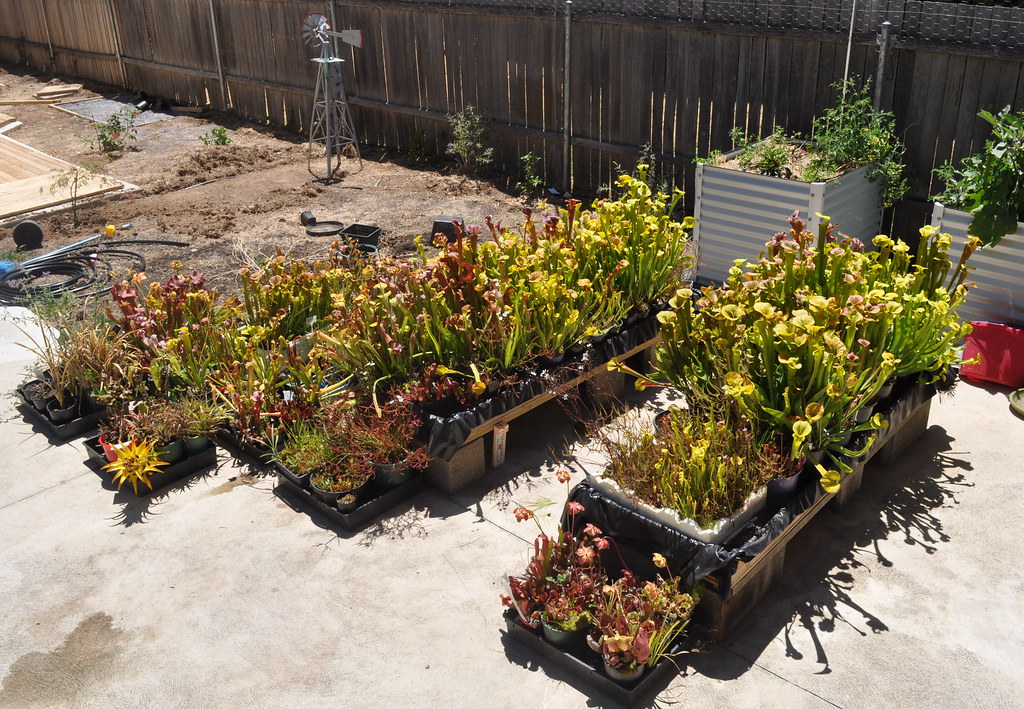
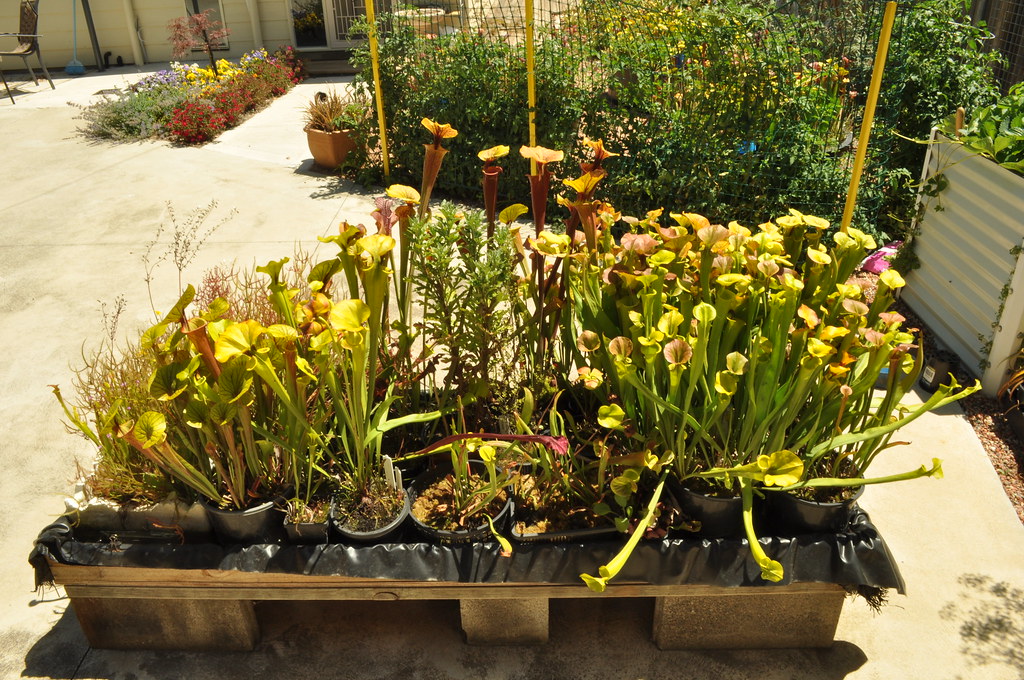
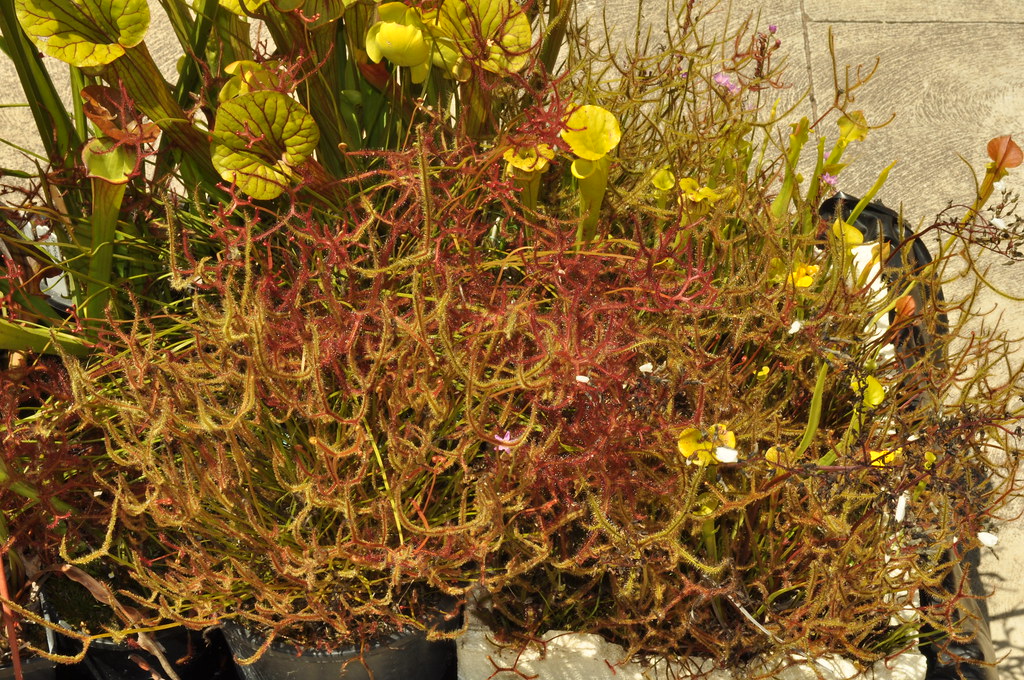
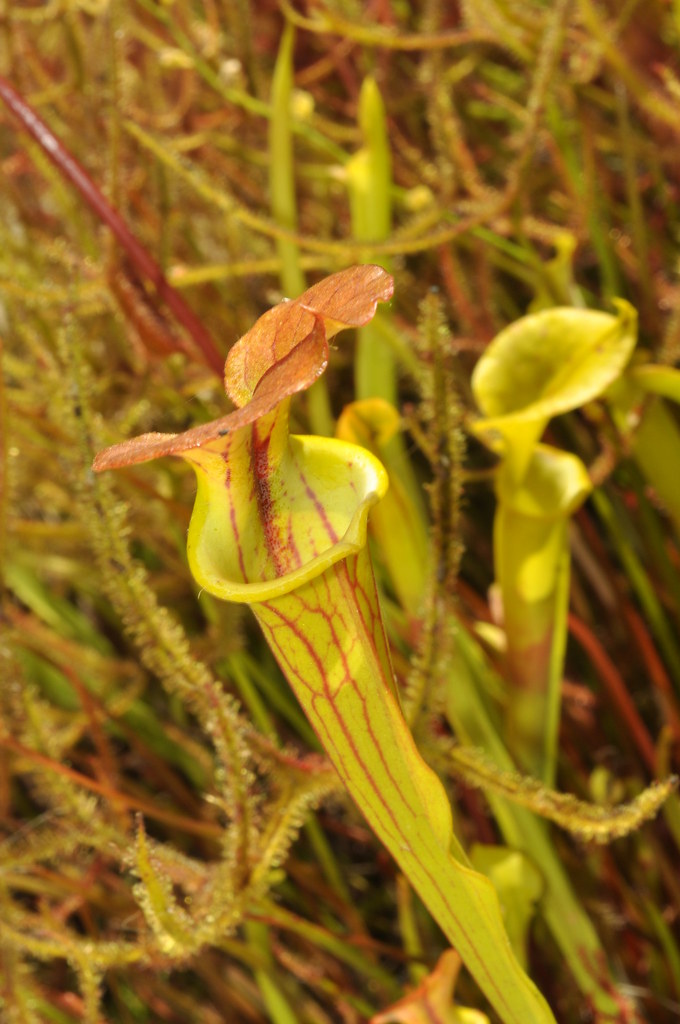
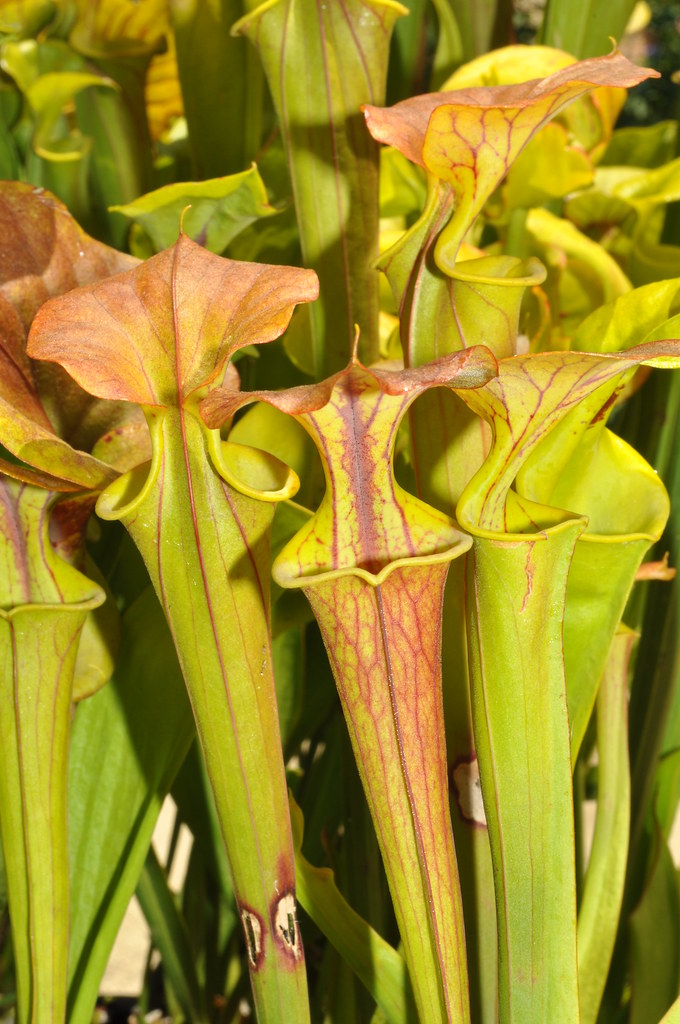
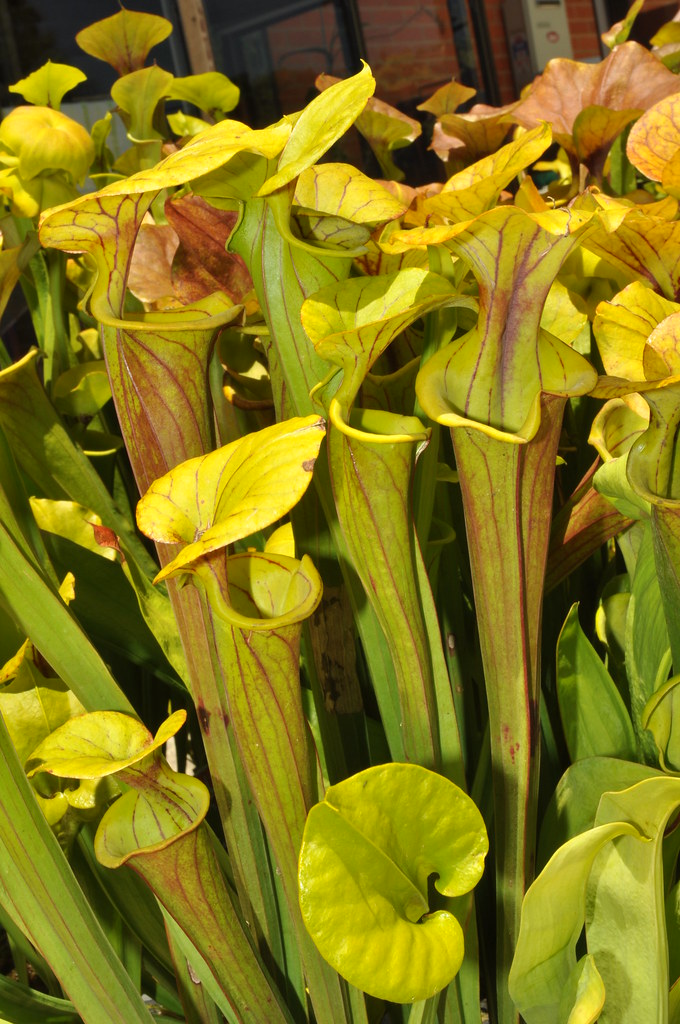

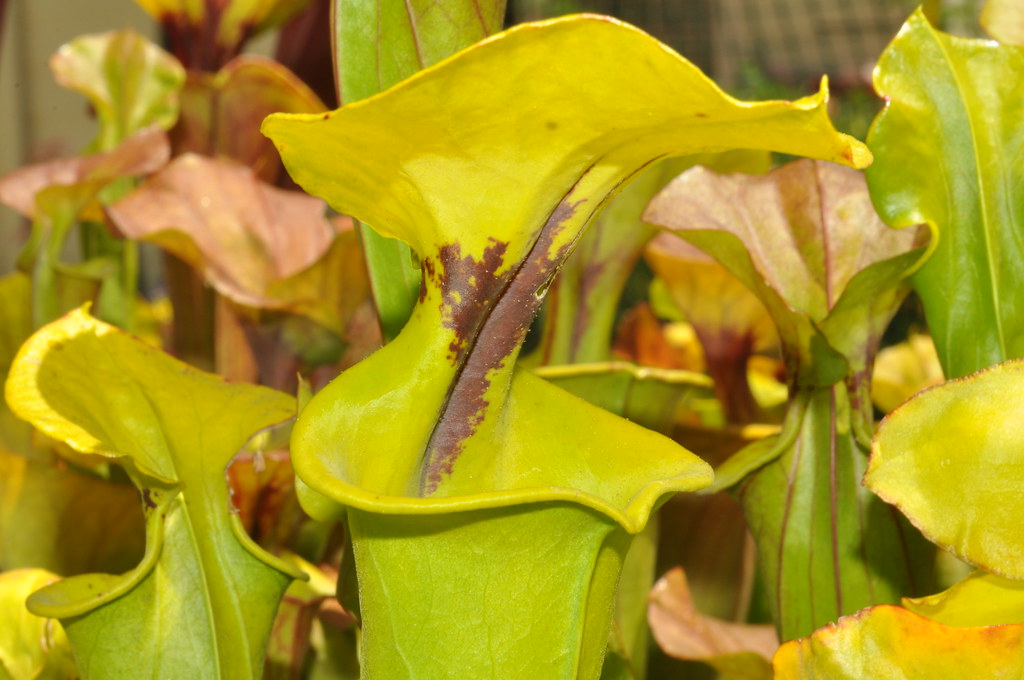
![Sarracenia x illustrata x [flava x alata]](https://farm9.staticflickr.com/8671/15992813050_fe8c9eb971_b.jpg)
![Sarracenia x illustrata x [flava x alata]](https://farm9.staticflickr.com/8677/16154316396_3f892e1888_b.jpg)
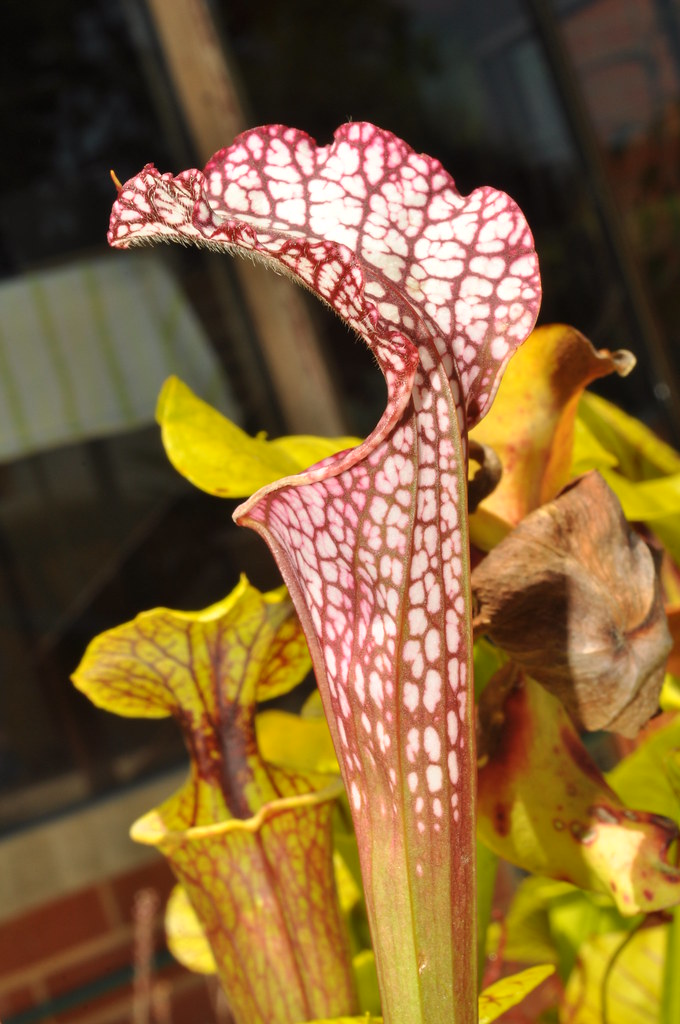
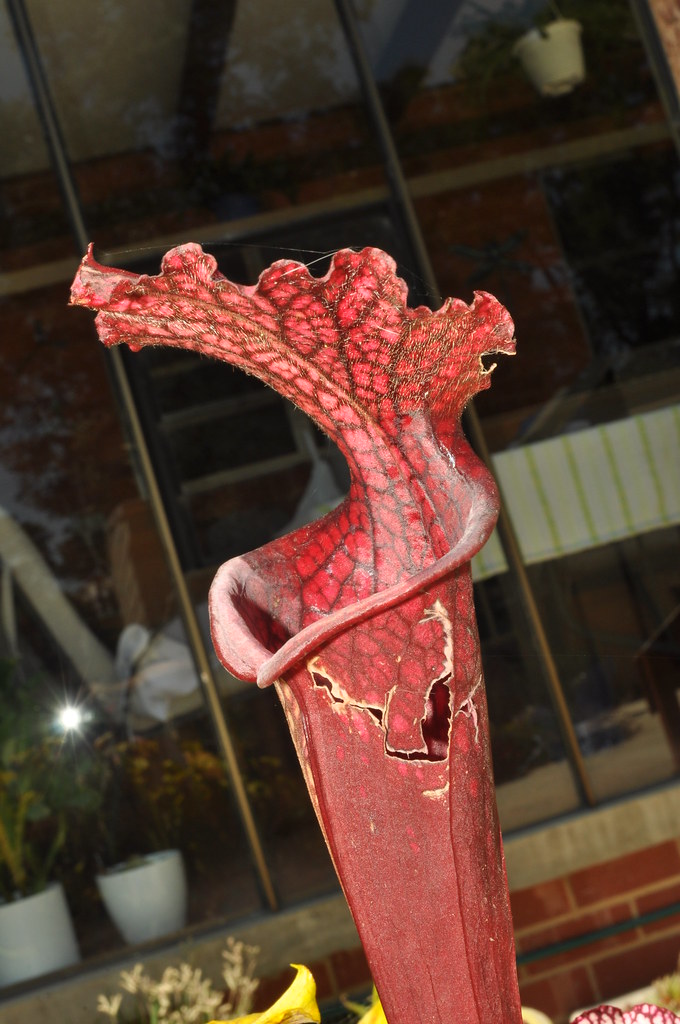
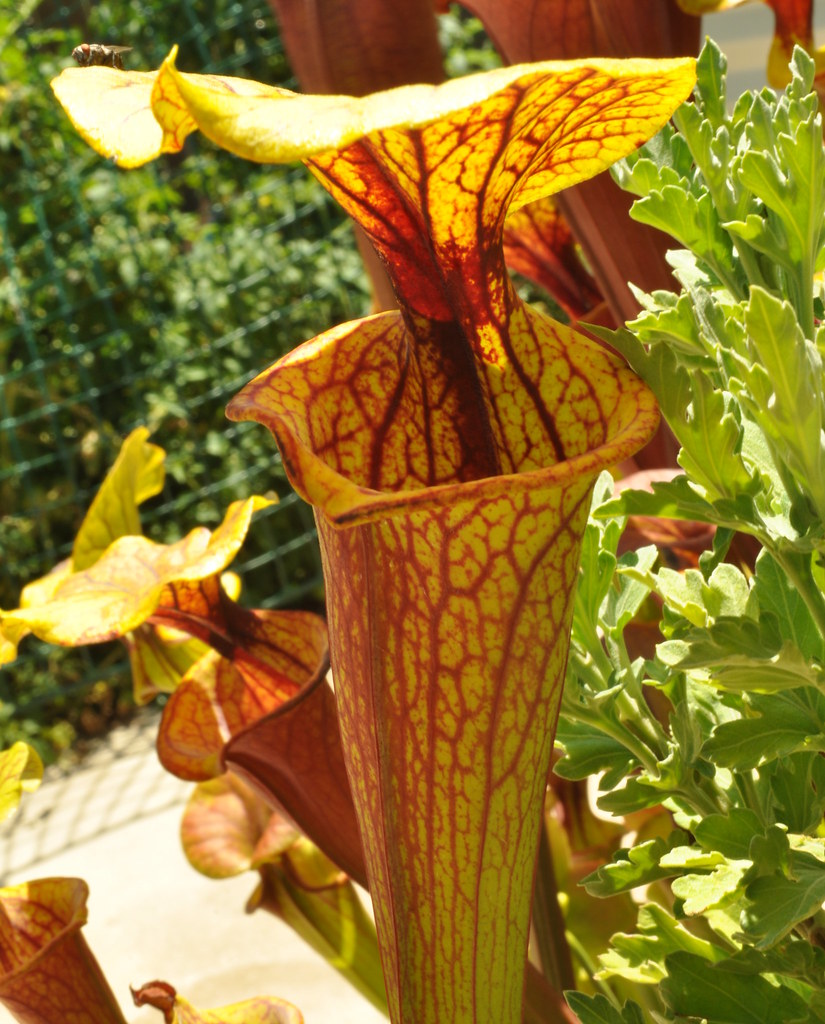
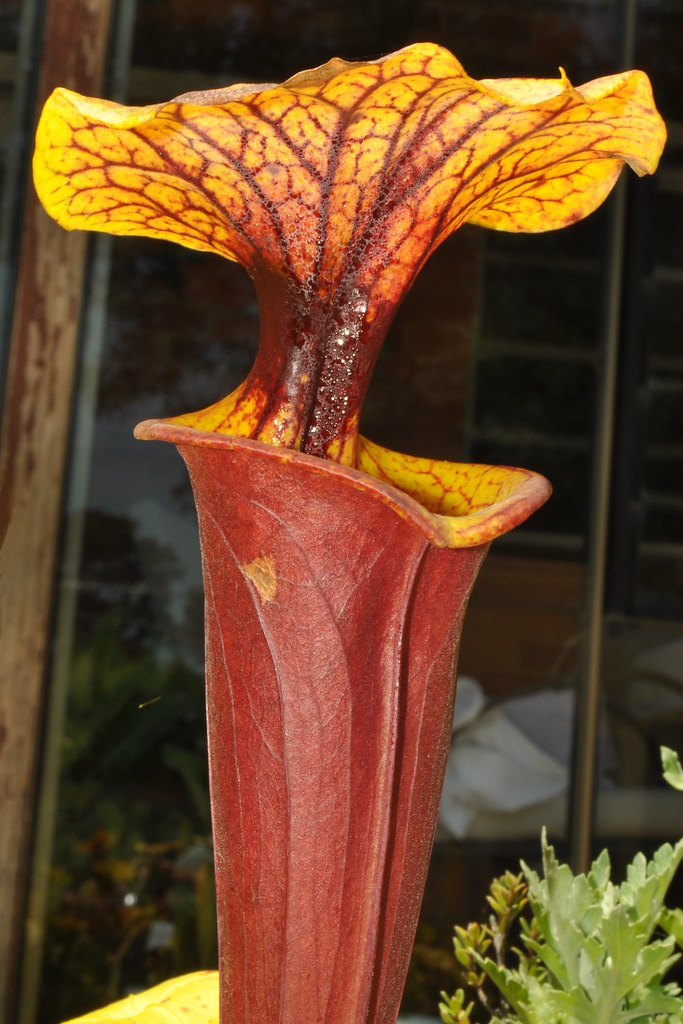
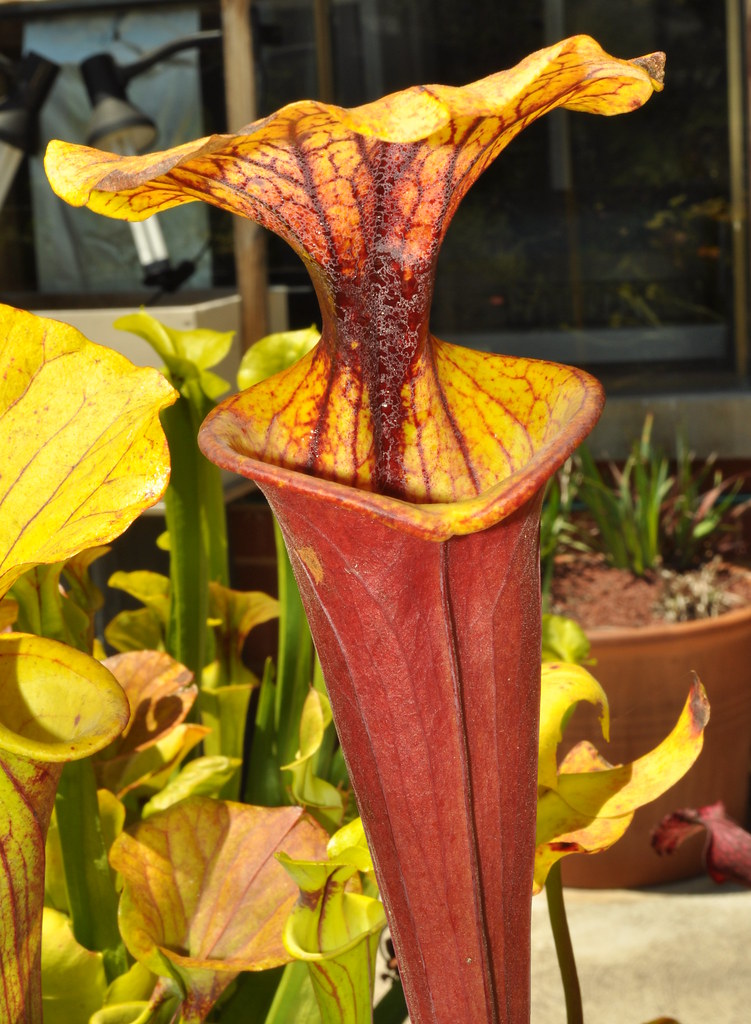
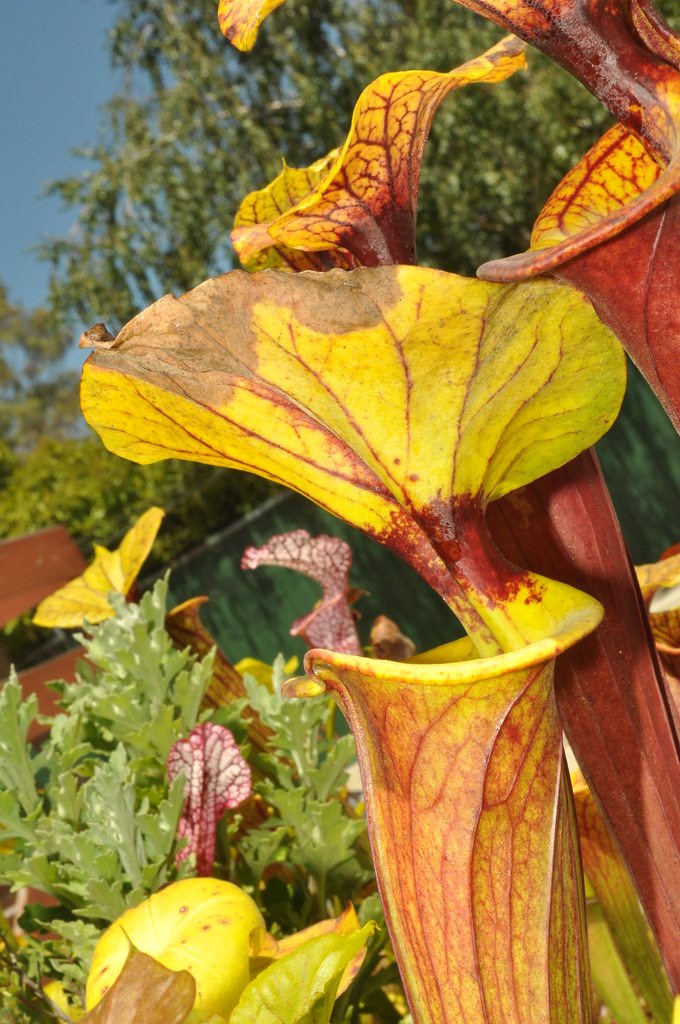
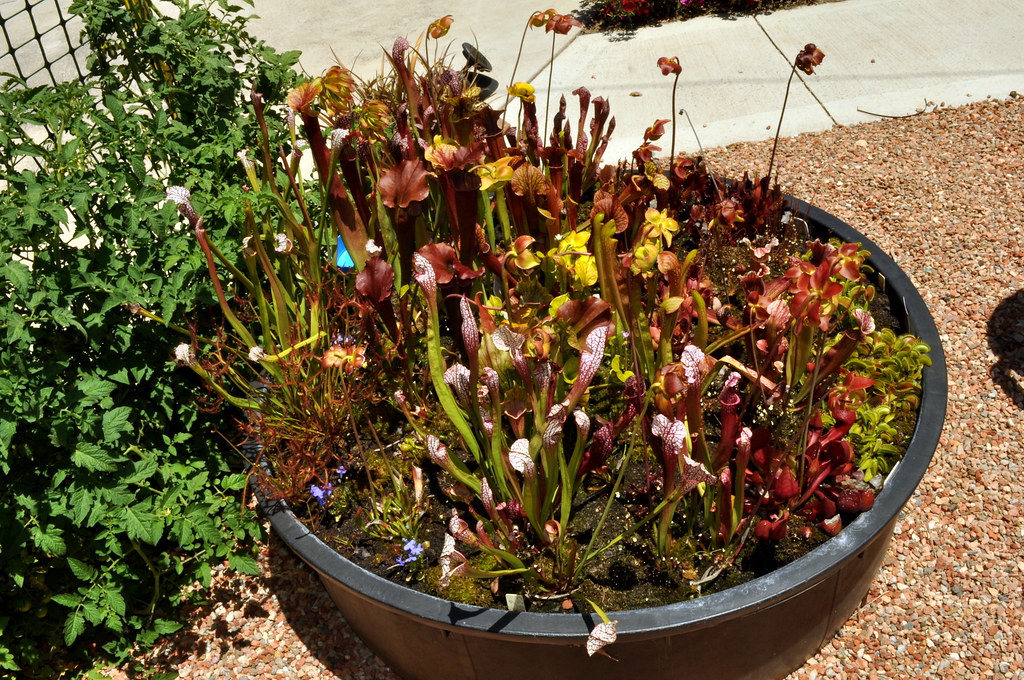
![Sarracenia leucophylla x [x formosa], Fly Free Zone clone](https://farm8.staticflickr.com/7517/15993111638_8b2ab95bd6_b.jpg)
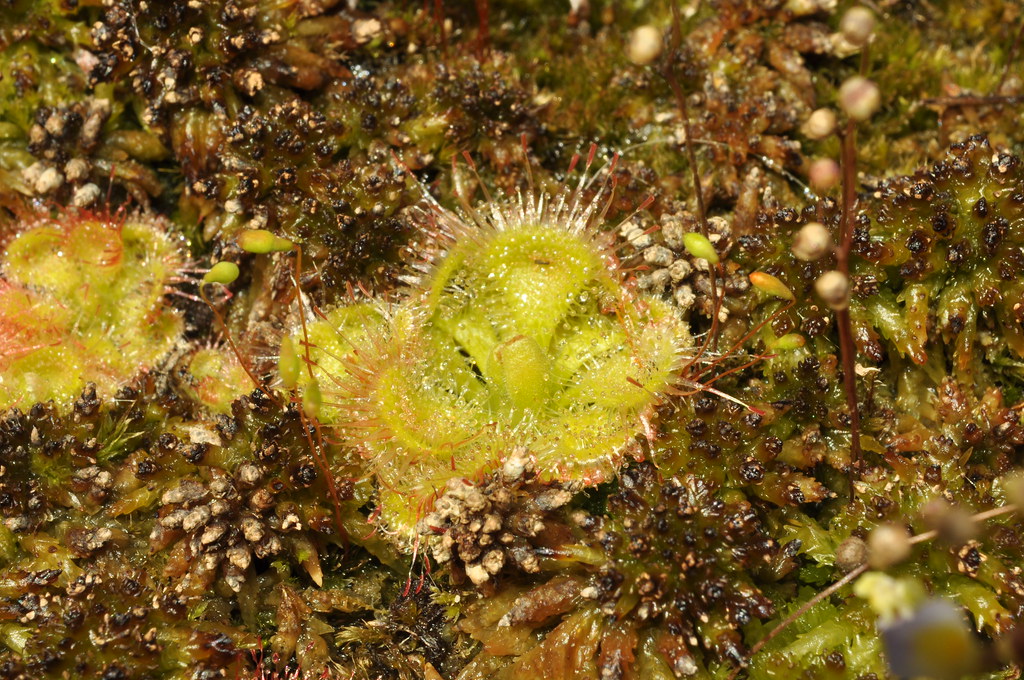



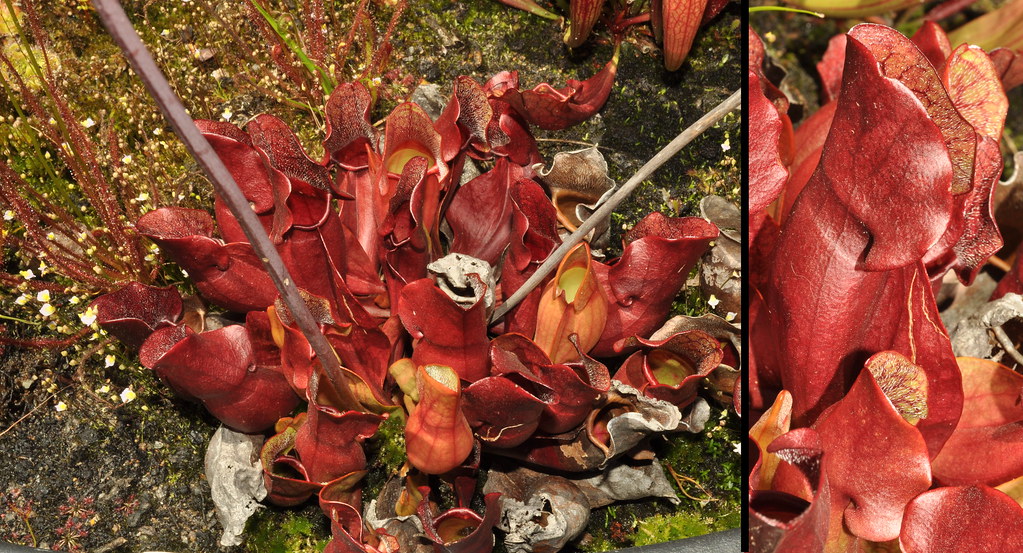
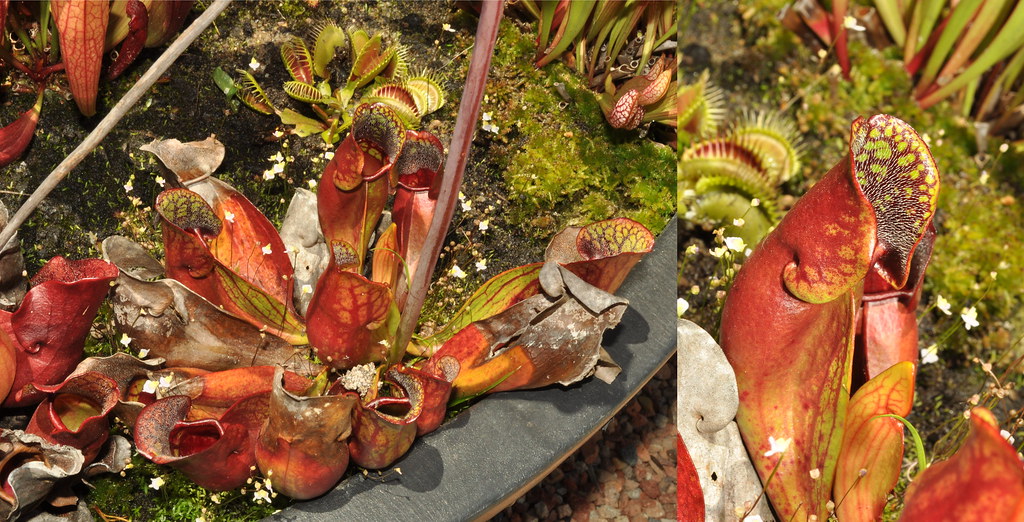
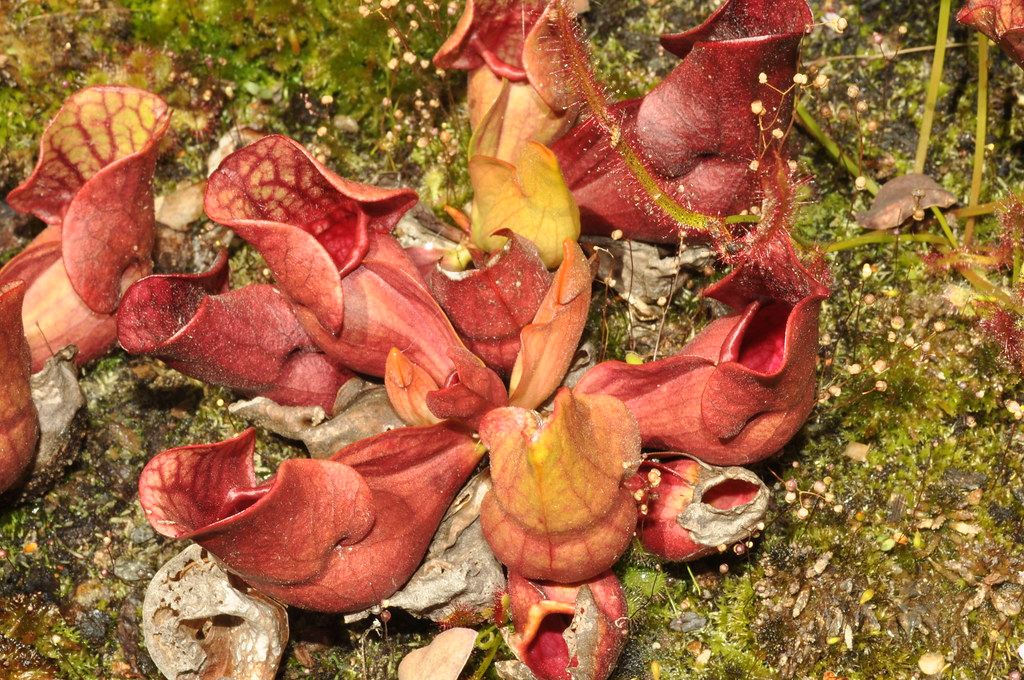
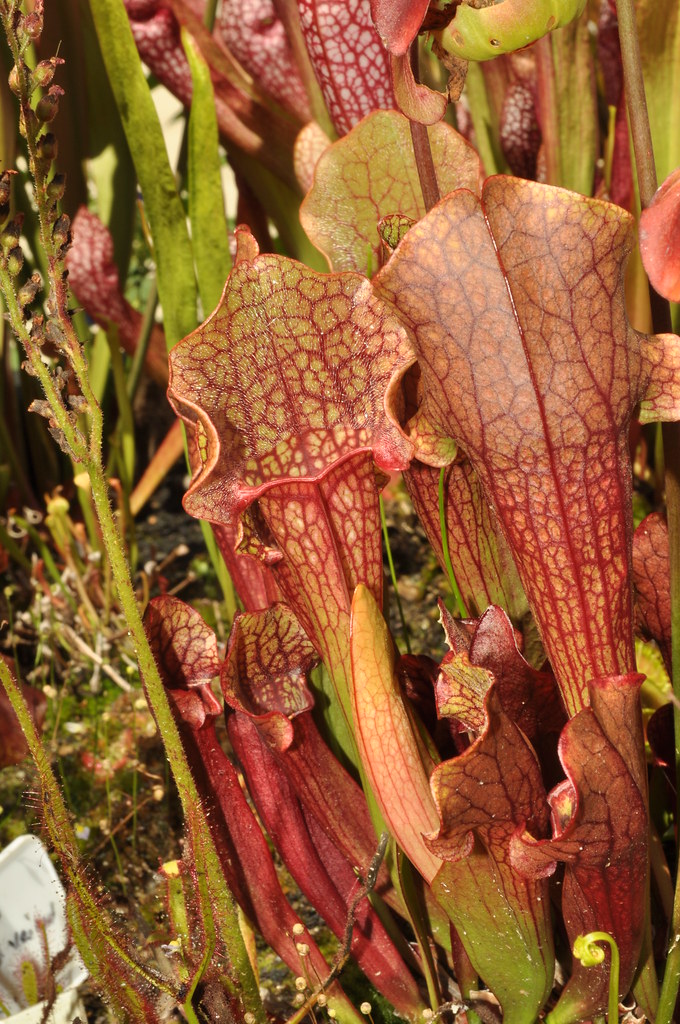
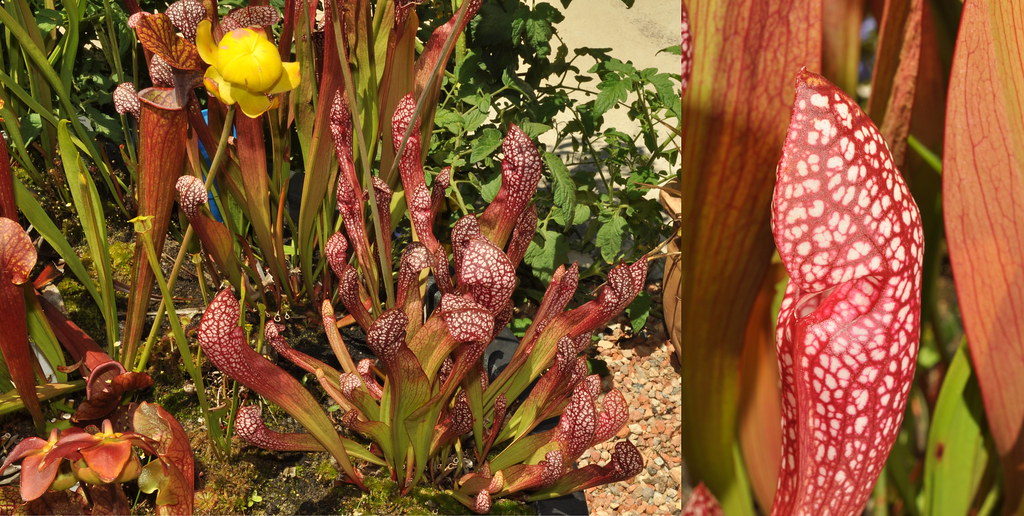

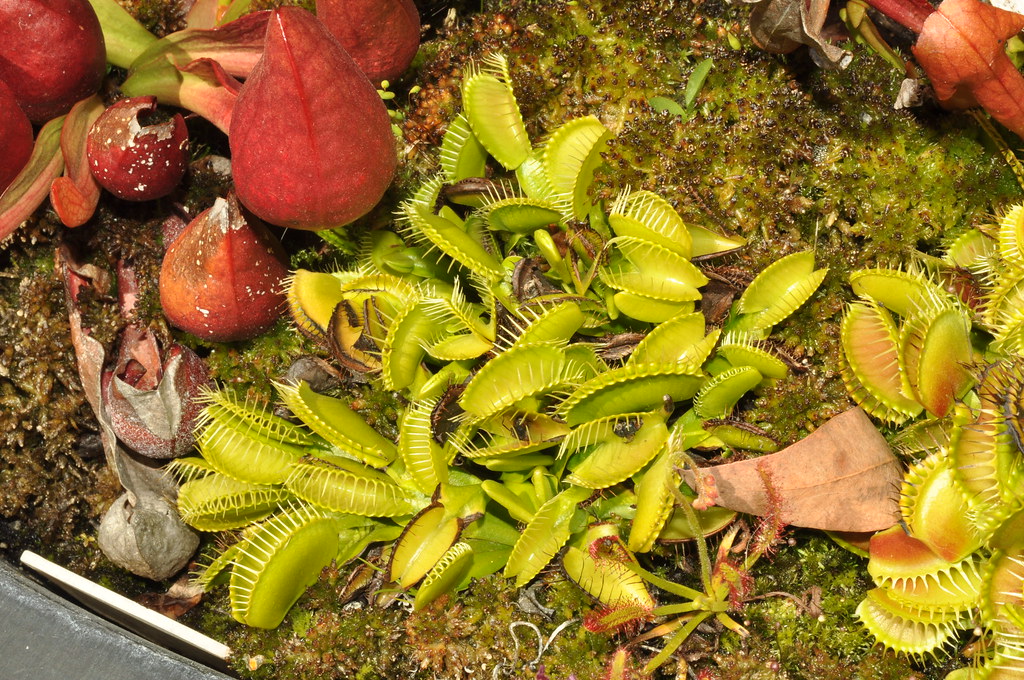
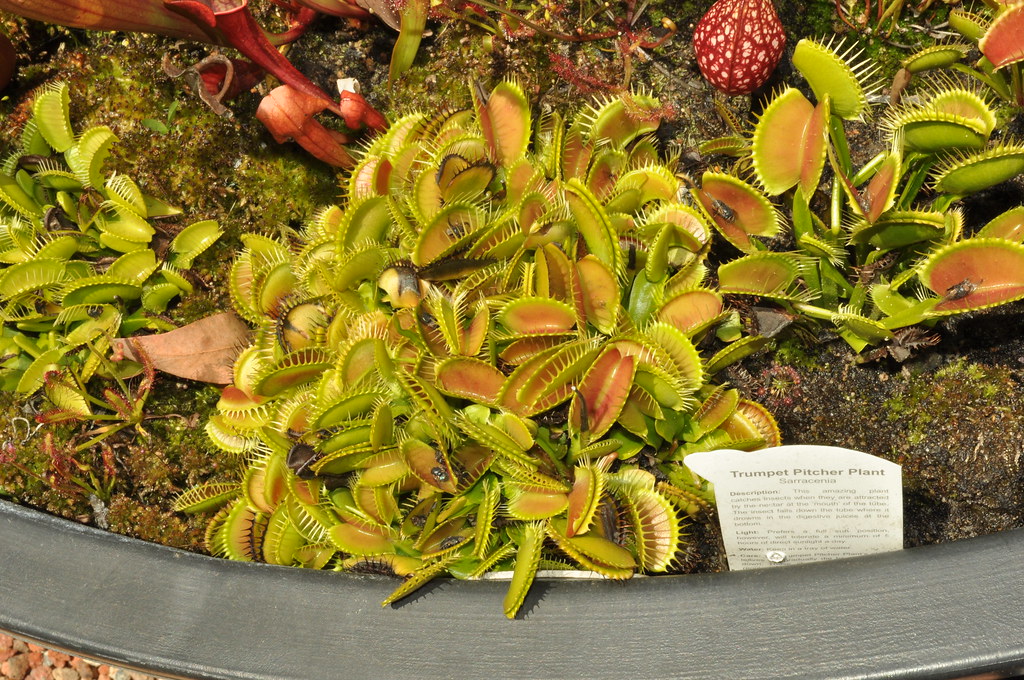
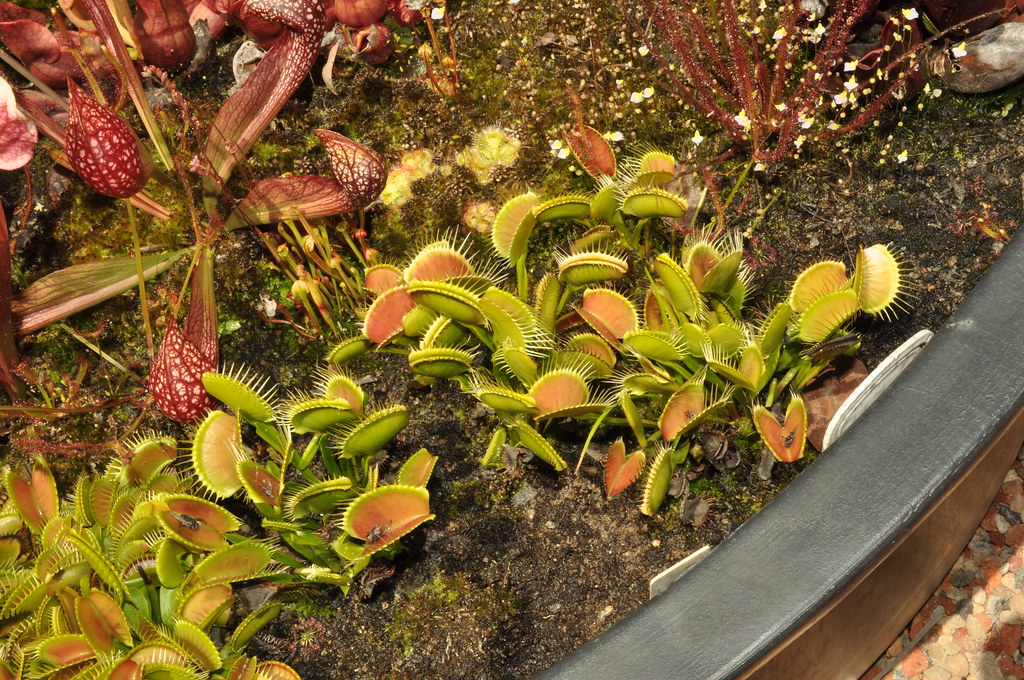
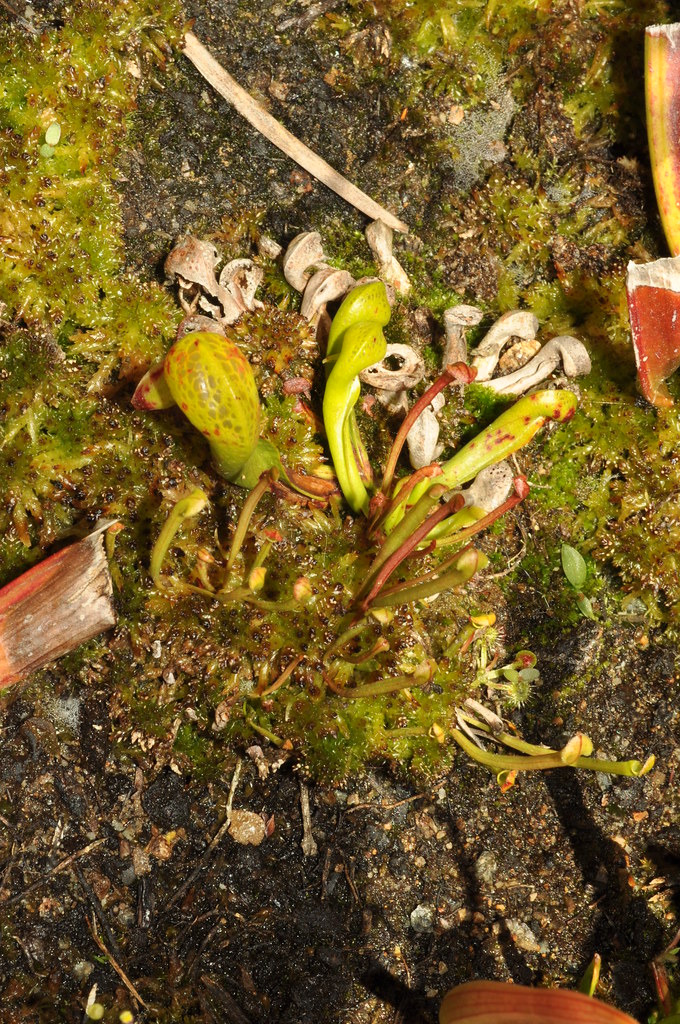
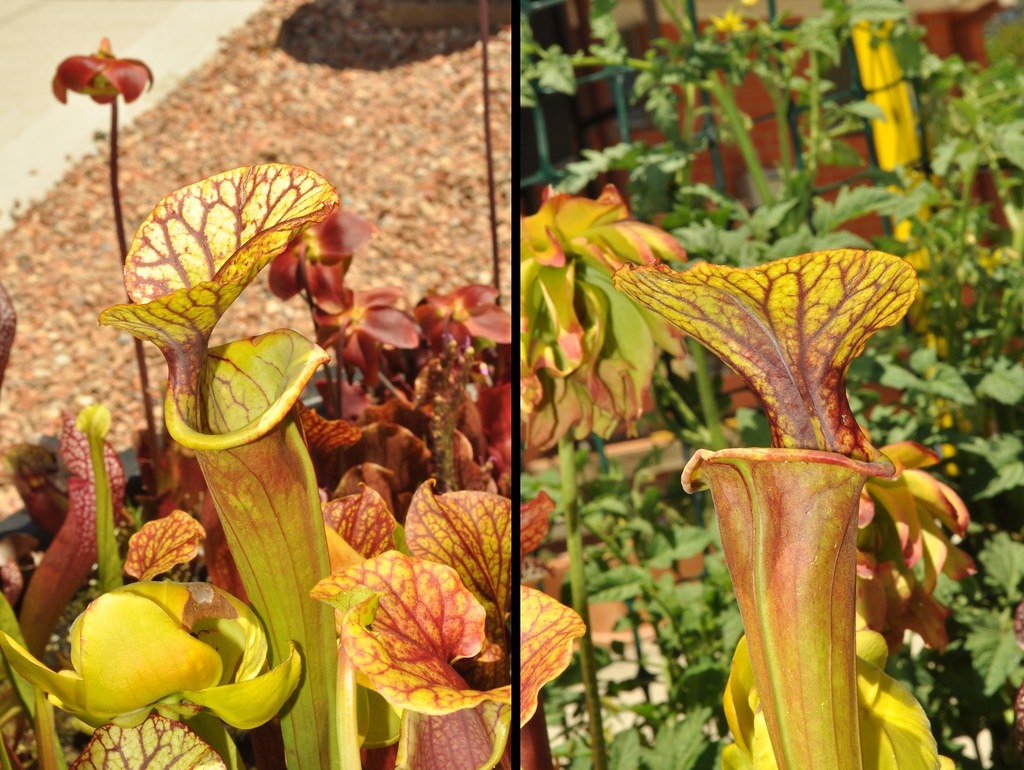
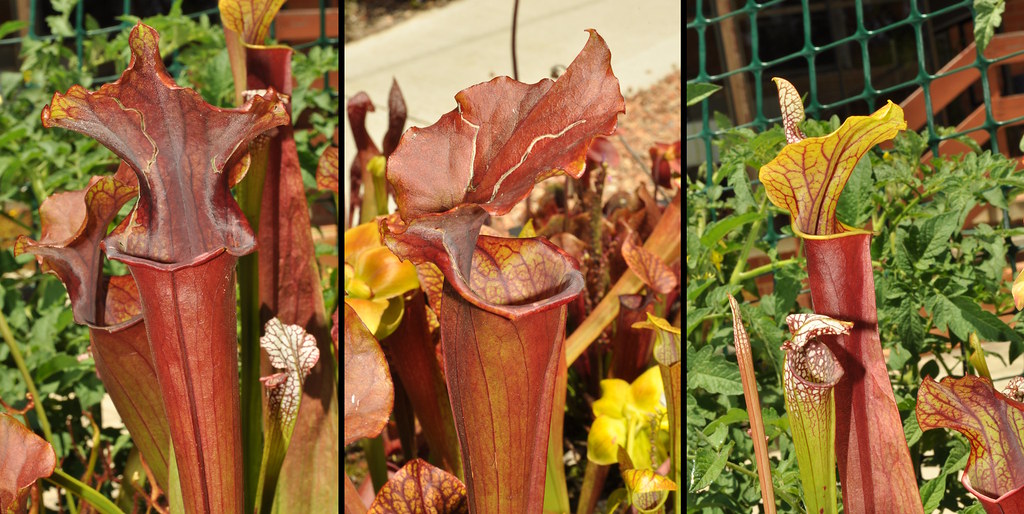
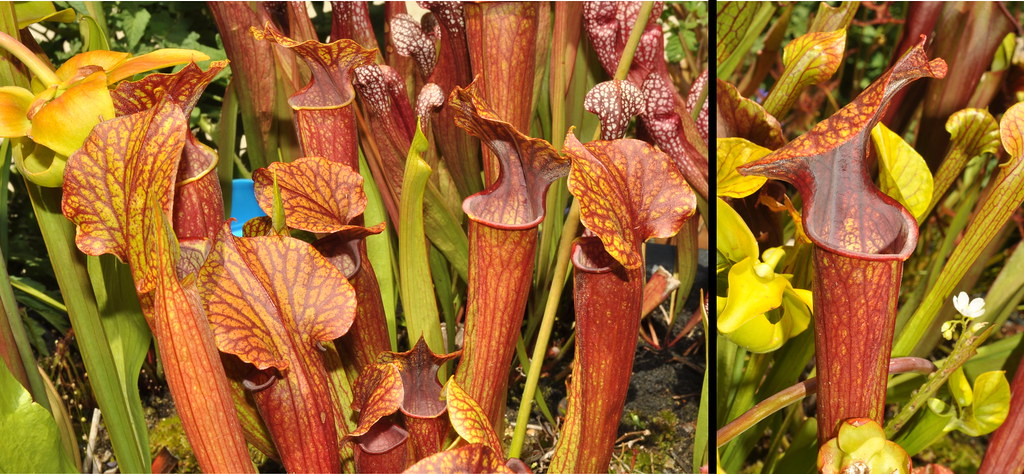
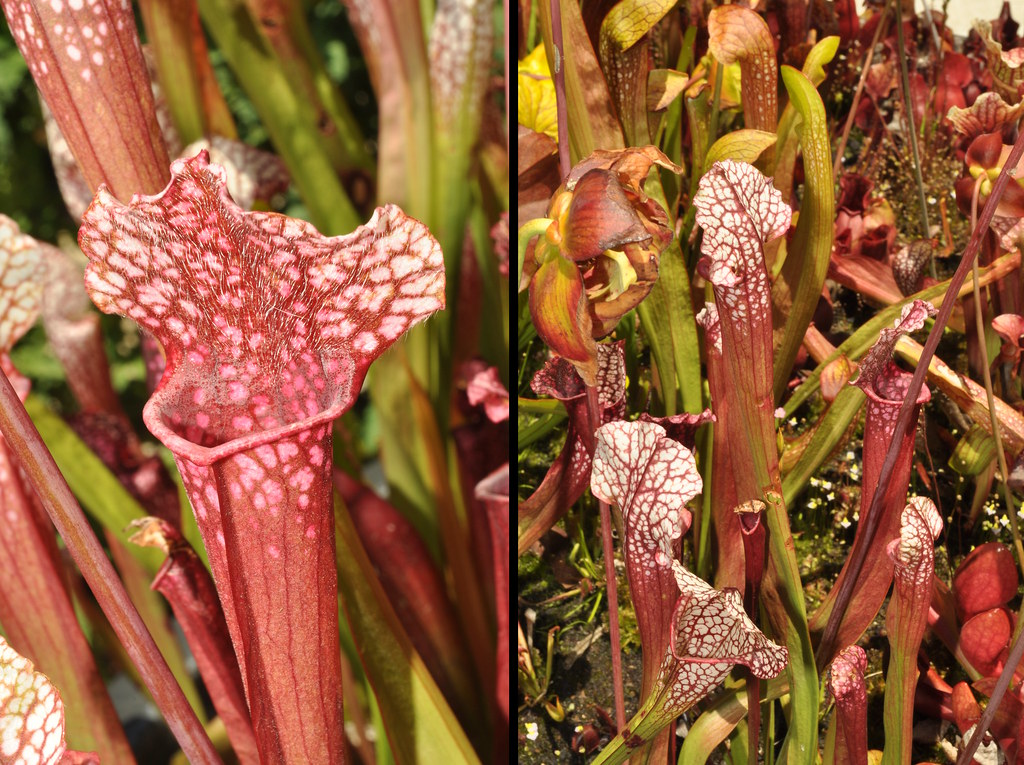
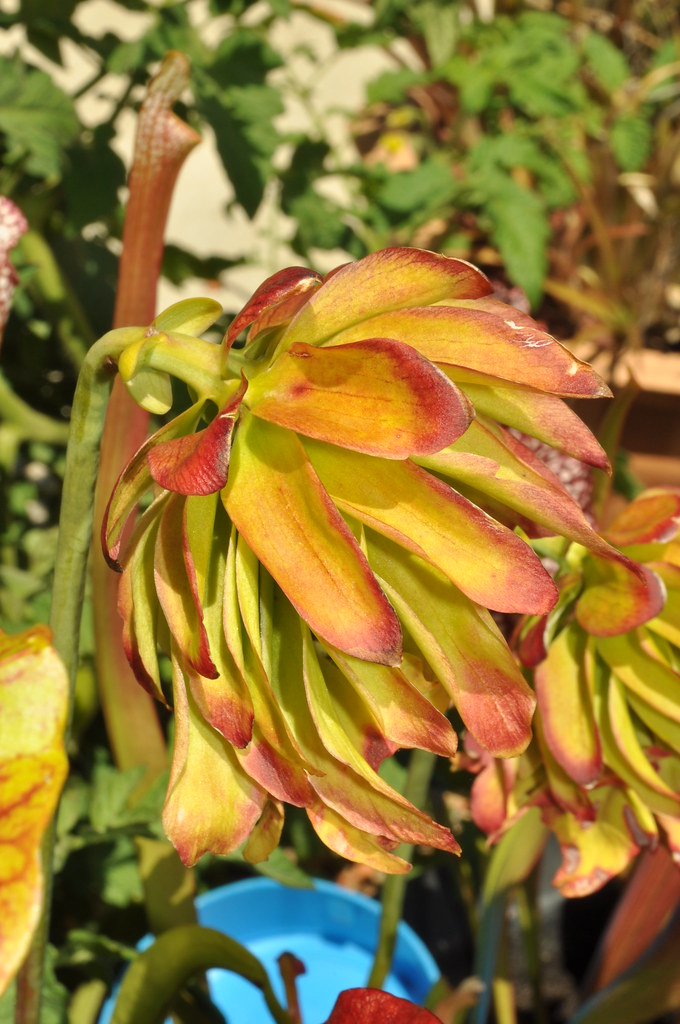
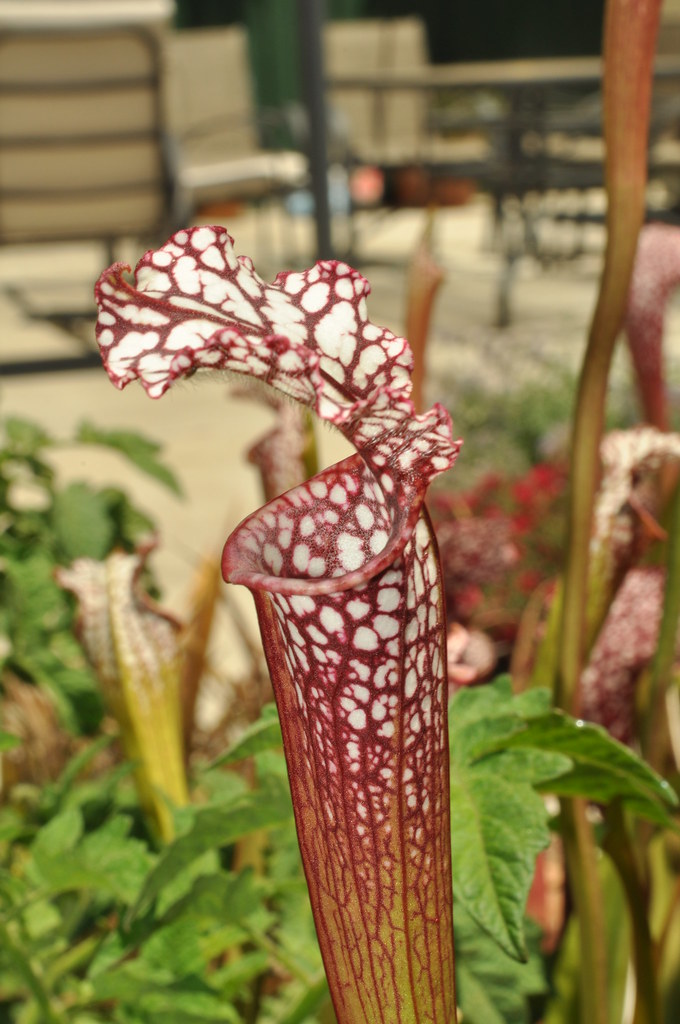
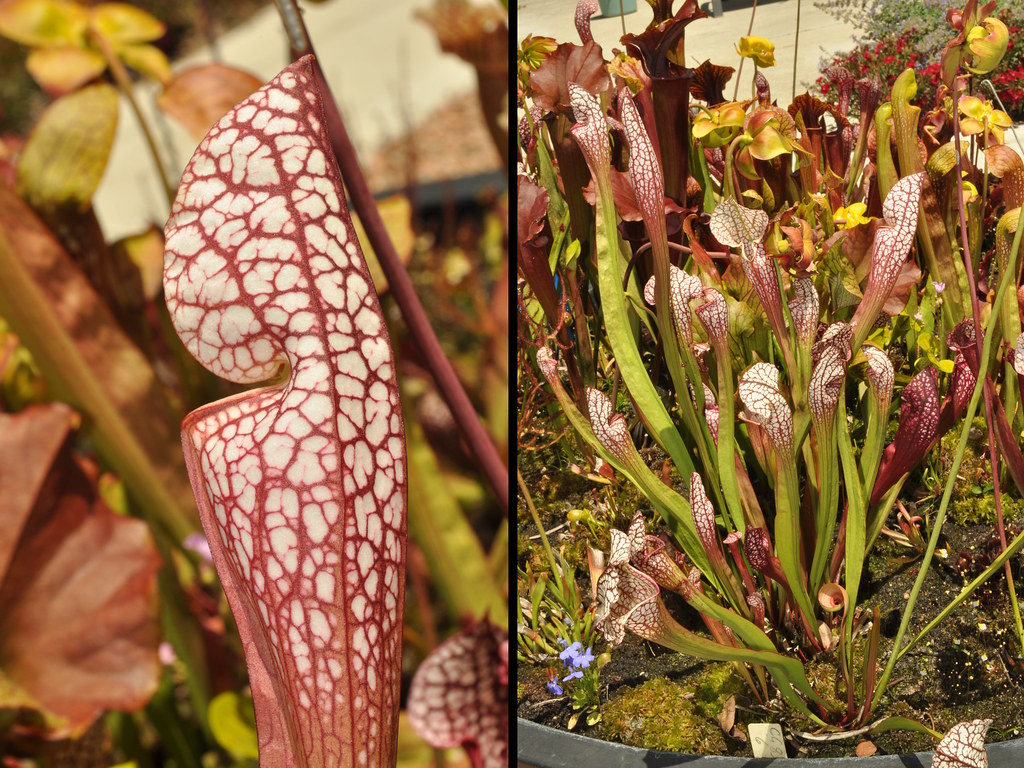


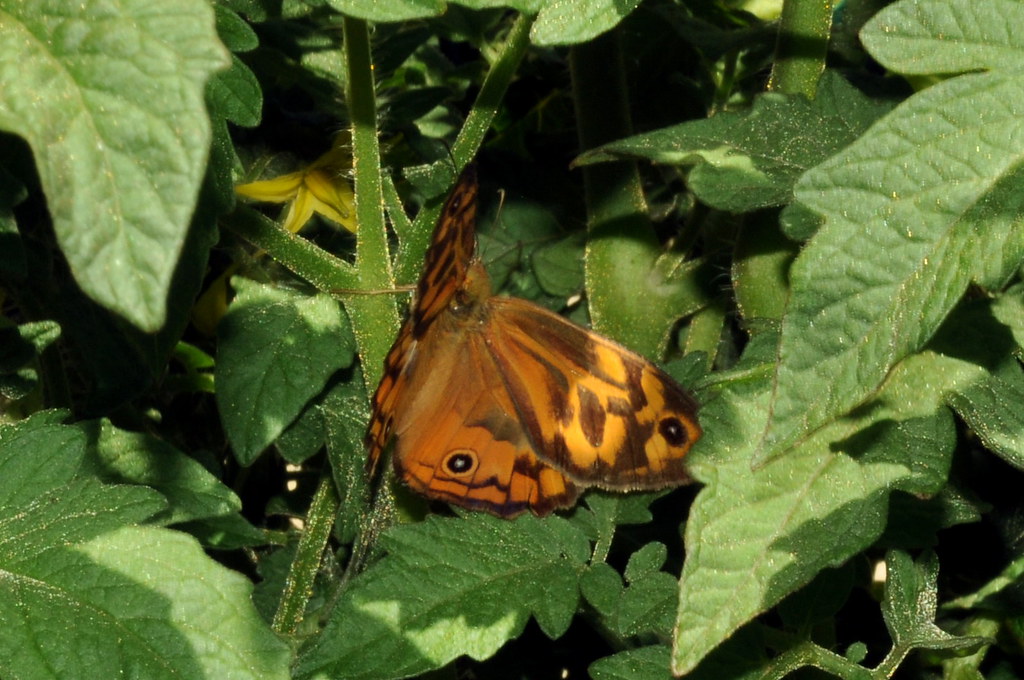
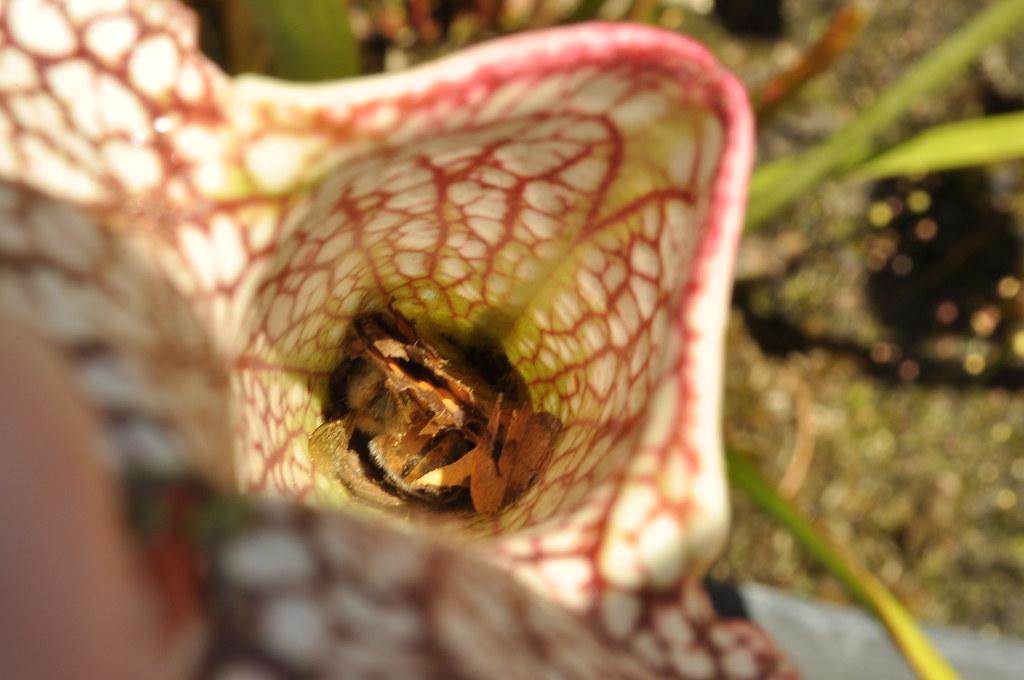

![Sarracenia rubra gulfensis x [ x formosa]](https://farm9.staticflickr.com/8679/16180089962_90f2c81fb6_b.jpg)
